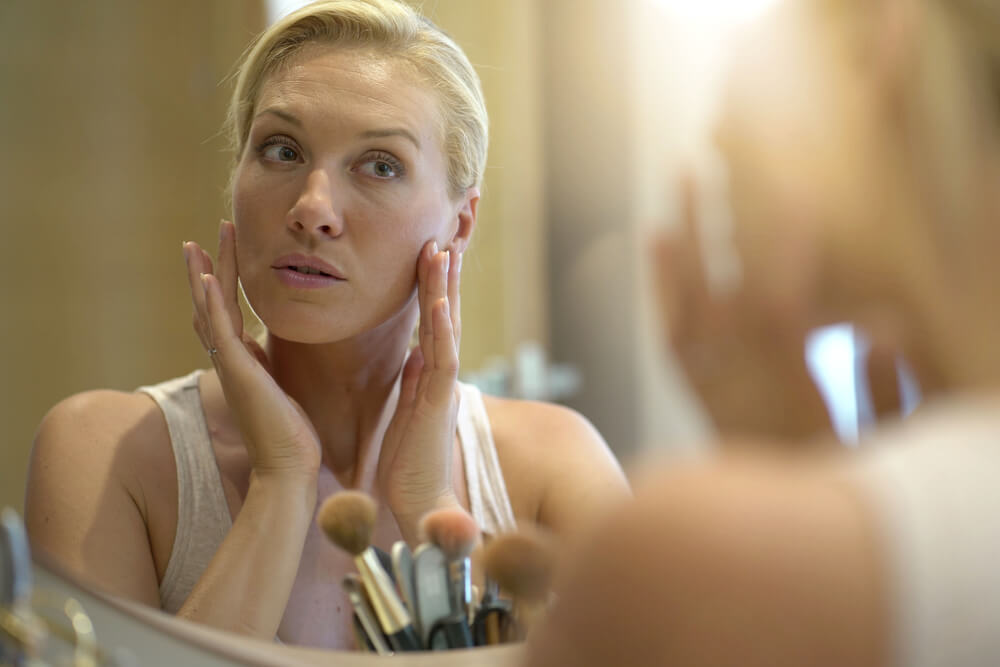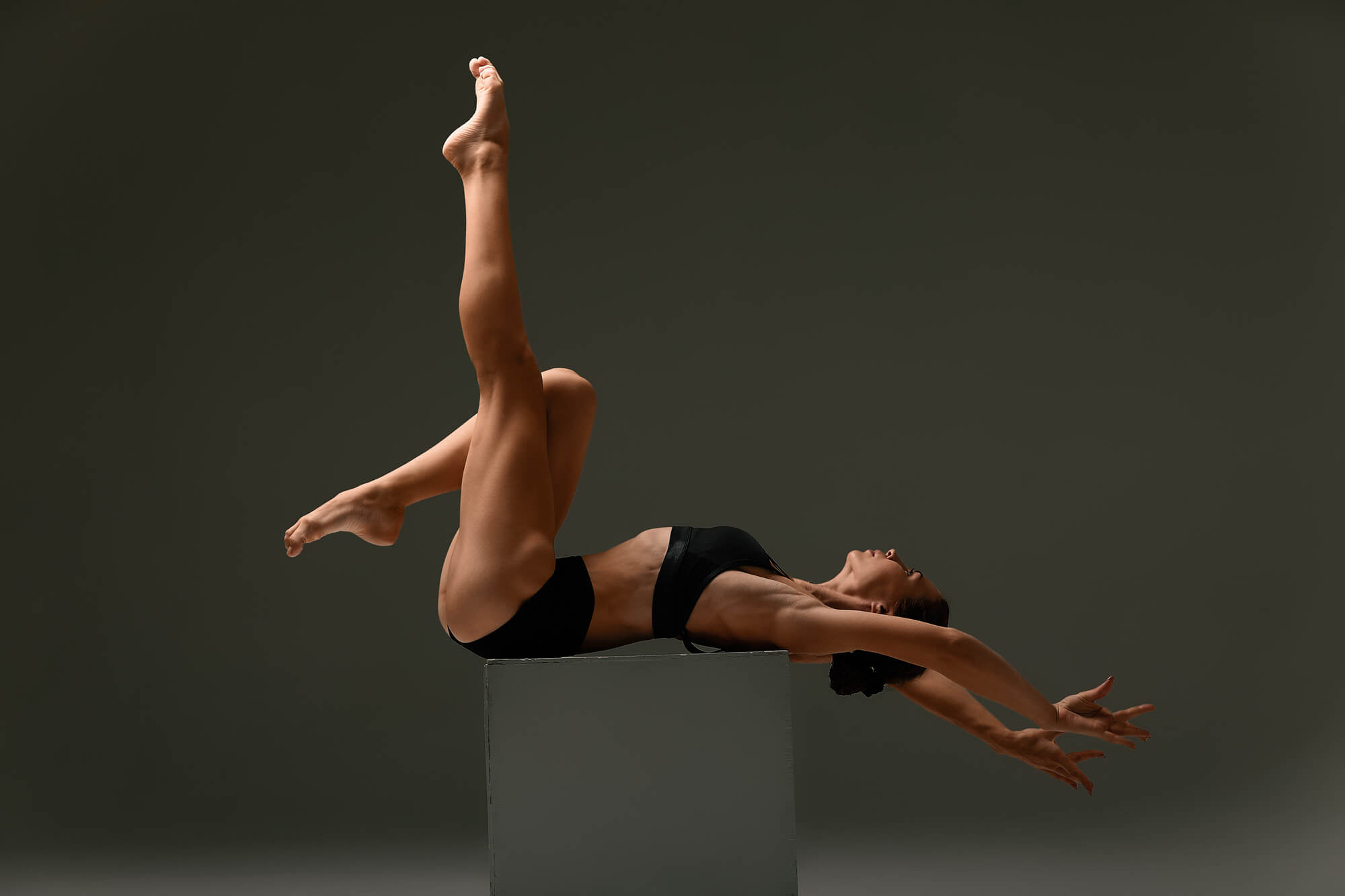
What exactly is cellulite?
Most women (an estimated 85% of us!) are familiar with cellulite, especially cellulite on the legs. Cellulite is that dimply skin that commonly appears on our thighs and other areas of our bodies. It is made up of tightly structured fat cells that push up against our connective tissue, causing our outer skin to pucker and has unsightly dimples.
Cellulite involves fibrous connective cords that tether the skin to the underlying muscle, with the fat cells of cellulite lying between and pushing up against the skin while the long, tough cords pull down – creating the dimpling effect of cellulite. Appearing on our thighs, hips, stomach, and rear end, extreme cellulite cases can cause the skin to have a contour like cottage cheese – not a great look!
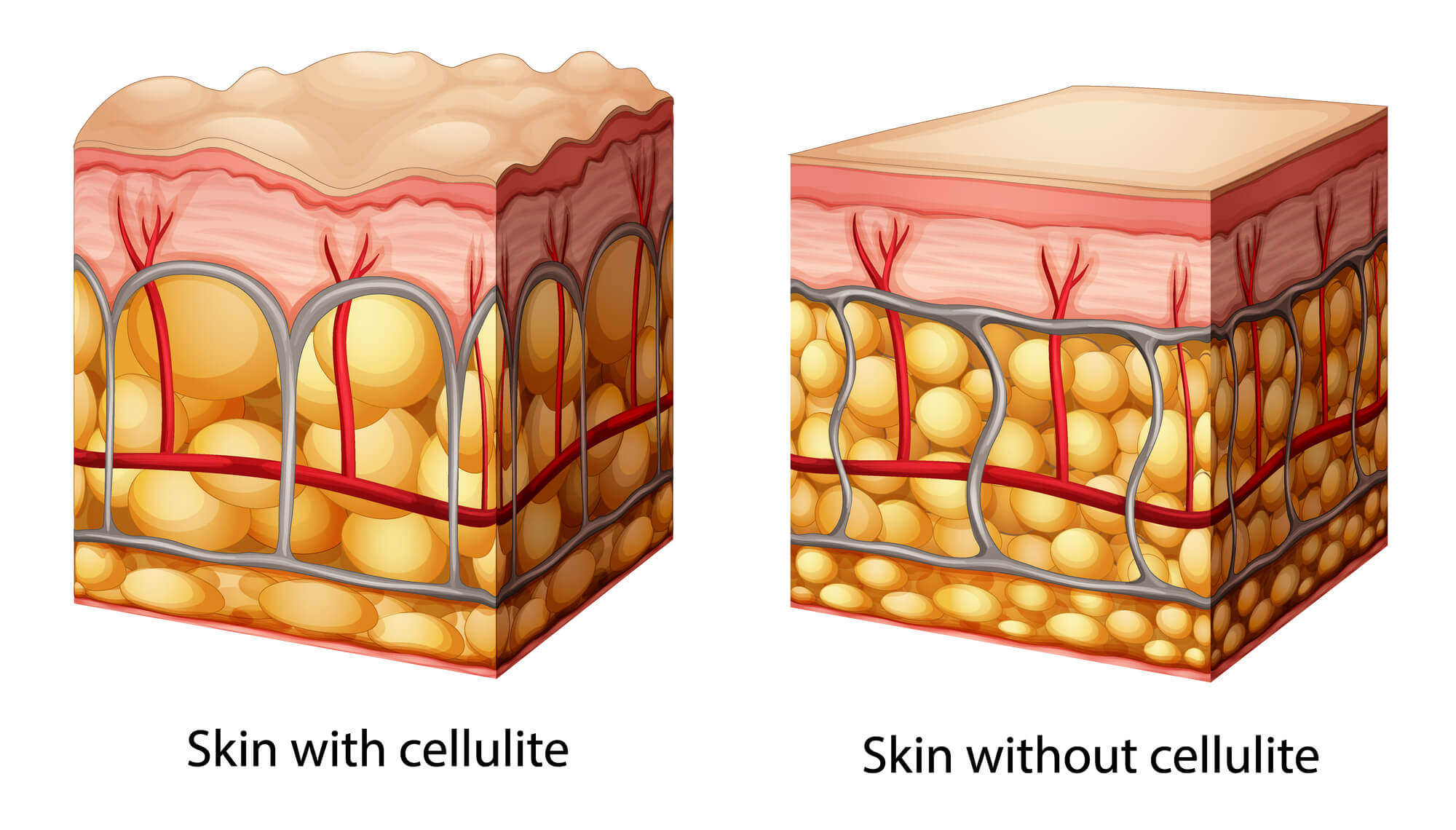
Why is cellulite more prevalent in women than in men?
It’s a fact that almost all women will curse having cellulite at some point or another – while less than 10% of men will develop the condition. This doesn’t seem at all fair, does it?
But the truth is that men’s connective bands beneath the skin have a strong and impenetrable crisscross pattern – while women’s connective tissue is patterned like a picket fence, which allows fat cells to more easily slip through and push up against the connective tissue, causing the dimpling appearance of cellulite morphology.
What causes cellulite?
Unfortunately, little is known about what causes this bane to our appearance. Hormonal factors play a significant role in the development of cellulite, along with genetics that determines our overall skin structure, skin texture, and body type.

Muscle tone and weight are also factors, but cellulite doesn’t discriminate – it can affect anyone, no matter how fit or thin she is. There’s no way to prevent cellulite, but you can make changes to your lifestyle (such as adopting regular exercise and a balanced diet) that may help reduce the amount of cellulite you experience.
Where is cellulite typically found?
Cellulite can be a curse on our hips, thighs, stomach, upper arms, breasts – and, yes, even on our rear ends. Cellulite isn’t harmful but can take a toll on our self-esteem. How noticeable it is, though, is often predicated on our genes, body fat percentage, skin thickness, and age.
Is it possible to make cellulite on the legs go away?
Cellulite tends to show up most commonly on our thighs because this area naturally has more fatty tissue. The bad news is that the unique structure of these fat cells makes cellulite harder for the body to break it down and get rid of it. So, do we have to consider thigh cellulite a permanent part of our bodies?
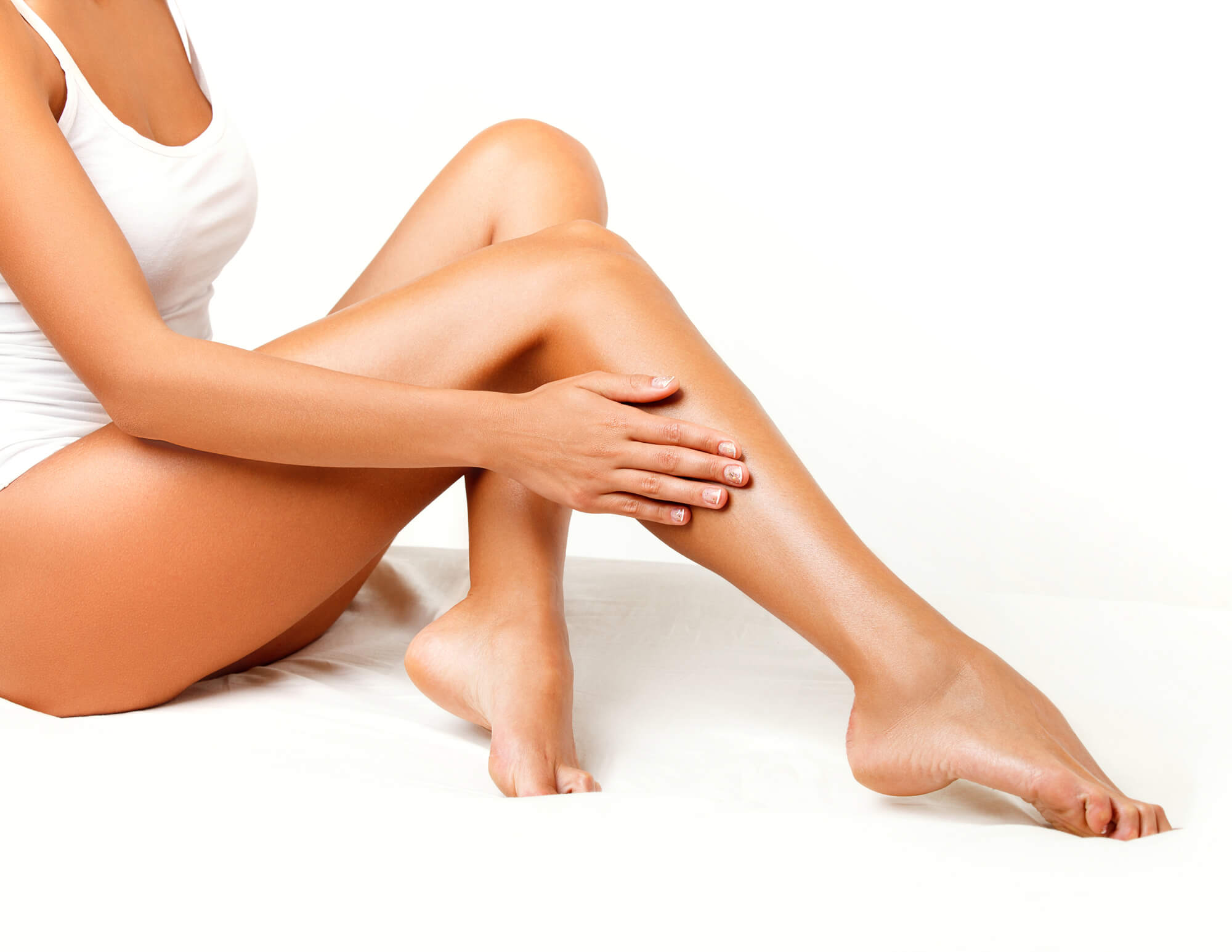
The good news is that dermatologists have been studying this problem for years and have found that, while making cellulite disappear completely is almost impossible to achieve, some treatments and lifestyle changes can make those hated dimples a bit less noticeable – at least for a few months or years at a time. Multiple treatments are usually necessary to keep cellulite at bay and to maintain smoother skin.
Does body weight contribute to cellulite?
Cellulite affects women of all body types and weights, so hardly any of us avoid this harmless, yet visually annoying affliction. Almost all women who’ve gone through puberty will have some cellulite.
This condition is not caused by how much weight we carry (even thin people can have cellulite), as cellulite stems from the structure of your fat cells and the strength of the connective tissue in your skin. Even if you’re at a healthy weight, you may still be susceptible to cellulite.
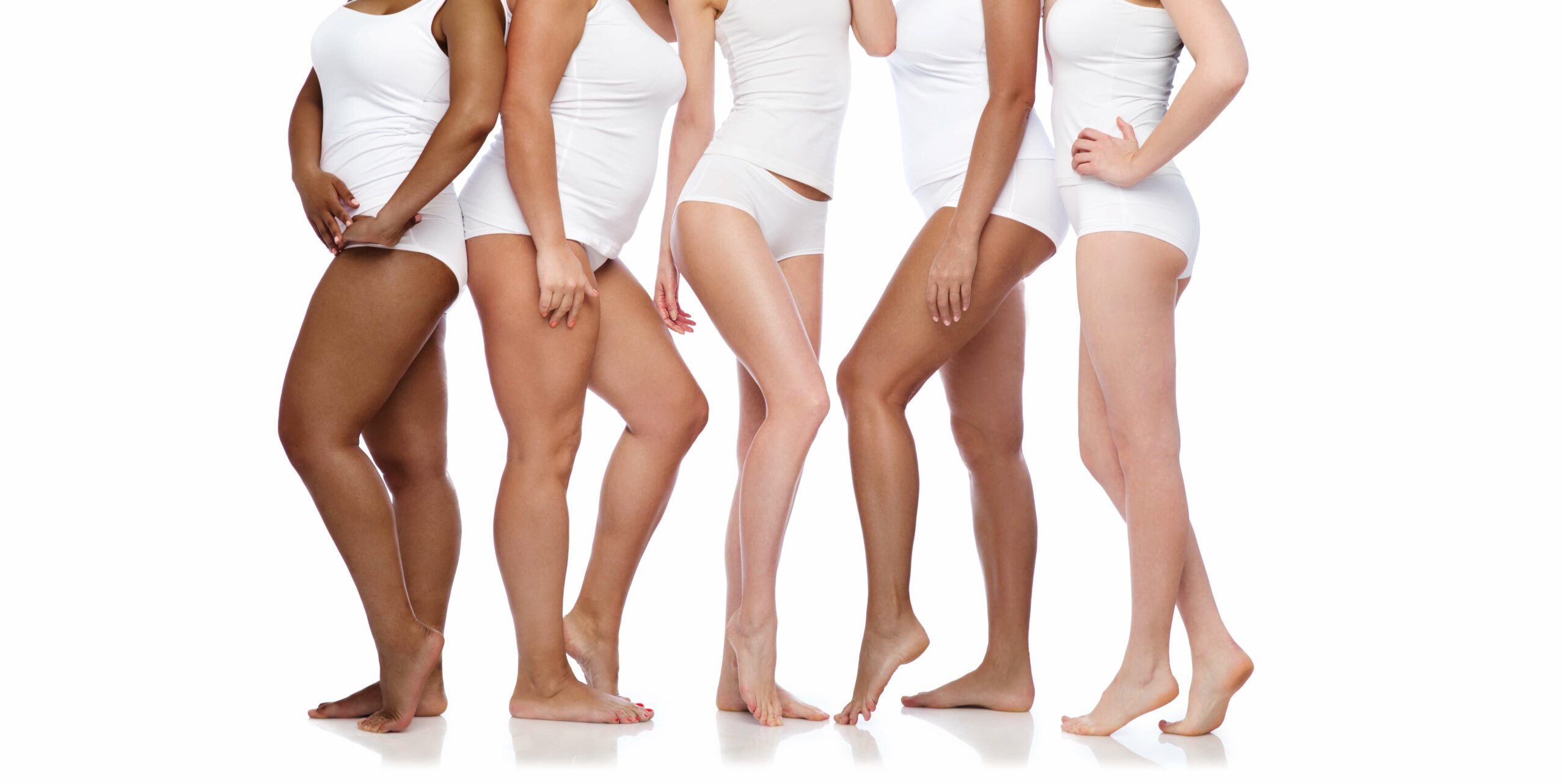
Does cellulite get worse with age?
Aging and cellulite go hand in hand for most women because we produce less estrogen as we grow older. Estrogen helps our blood vessels and lymphatic system to function properly. As our estrogen decreases, our circulation worsens, and our collagen production levels drop. Consequently, cellulite forms when our connective tissues weaken.
As we age, cellulite can become more visible because our skin becomes thinner and loses its elasticity, which exposes the rippled connective tissues underneath. It is hard to get rid of cellulite, loose skin, and fatty tissue when the skin is in a weakened state.
What are some of the other causes of cellulite?
In addition to age, the appearance of cellulite can result because of the following factors:
• Hormones and pregnancies
• Unhealthy, sedentary lifestyle
• Poor diet and excess fat
• Excessive weight gain
• A history of cellulite in the family

How do hormones and pregnancies contribute to cellulite?
Cellulite often develops when women produce more estrogen, usually during adolescence or pregnancy. Estrogen causes fat to build up in the breasts, thighs, and buttocks. Cellulite can develop when your body is in a high-estrogen state, such as when you are pregnant.
This high level of estrogen leads to increases in fat cells, weakening skin’s connective tissue and allowing cellulite to appear. Cellulite occurs in most of our bodies, and it causes our skin to look puckered or dimpled because of how fat pushes against our connective tissue.
How can our lifestyle contribute to cellulite?
Unhealthy lifestyle choices can make it hard to get rid of cellulite. Bad eating habits (such as eating a high-fat diet) or not getting enough exercise can cause an increase in fat cells. Smoking, too, can damage your skin, causing it to lose its strength and elasticity – an invitation for cellulite to form!
To minimize cellulite, we should maintain a positive lifestyle that includes eating a healthy balanced diet (avoiding processed foods, high-fat foods, and refined sugars), exercising regularly, losing that extra weight, and drinking plenty of water to stay hydrated.
Avoid diets with high levels of fats, salt, preservatives, or carbs, as these can help generate more subcutaneous fat cells and contribute to the development of more cellulite.
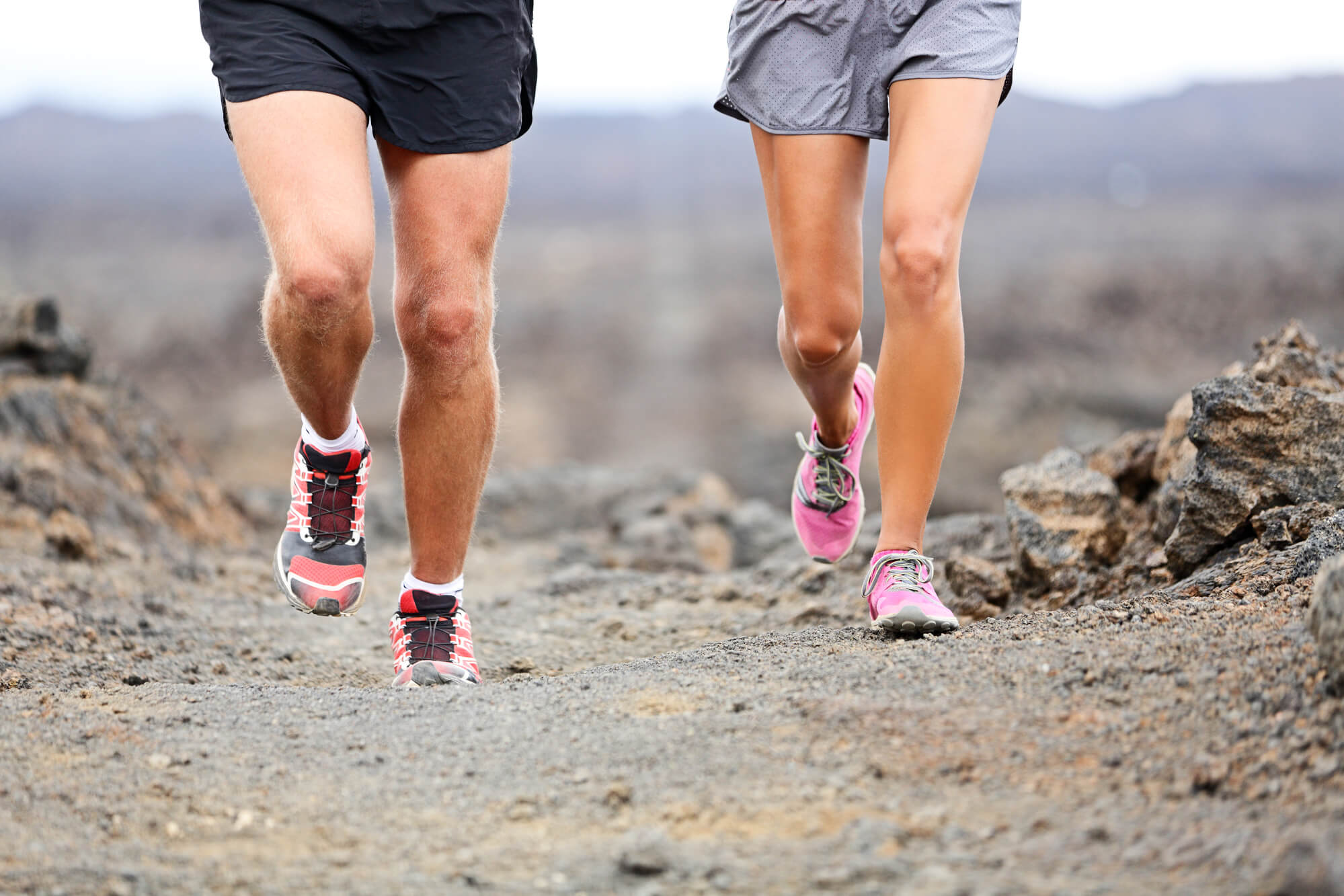
How can exercise help to reduce cellulite?
Regular workouts combining aerobic exercises and strength training will help you burn fat. In addition to helping us lose weight and tone muscles, these exercises can also help break down those pesky fat cells.
To get rid of cellulite, exercise daily, focusing on areas prone to cellulite. Cardio exercises promote weight loss, while strength exercises build muscle, increase circulation, and improve skin elasticity.
What are home remedies for minimizing cellulite?
Creams and other topical treatments can reduce cellulite by improving skin texture and plumping up the skin. Look for anti-cellulite products that include retinol, caffeine, alpha hydroxy acids, and aminophylline. Twice-daily applications of a 0.3% retinol cream for six months can thicken your skin and reduce that orange-peel look. Daily applications of retinol can help reduce how much cellulite you see.

Another common ingredient in anti-cellulite creams is caffeine, which increases blood flow to the applied area and works as a diuretic. Caffeine changes the water content of the fat, reducing the appearance of cellulite.
Do dry brushing and foam rolling techniques reduce cellulite?
Cellulite forms when fibrous bands connecting your skin to the underlying muscle tighten irregularly. This tightening pulls down on your skin, and the normal layer of fat beneath the skin pushes upward. Consequently, cellulite makes the surface of your skin appear dimpled.
Several at-home devices claim to reduce cellulite by stimulating blood flow and tissue regeneration. These devices include dry brushes and foam rollers:
· Dry brushing uses a natural plant loofah or body brush in long fluid strokes or circular motions to gently smooth dry skin for up to five minutes. Dry brushing stimulates blood and lymph flow, removes dead skin cells, and stimulates new cell growth. Skin temporarily puffs up due to increased blood circulation, which reduces the appearance of cellulite.
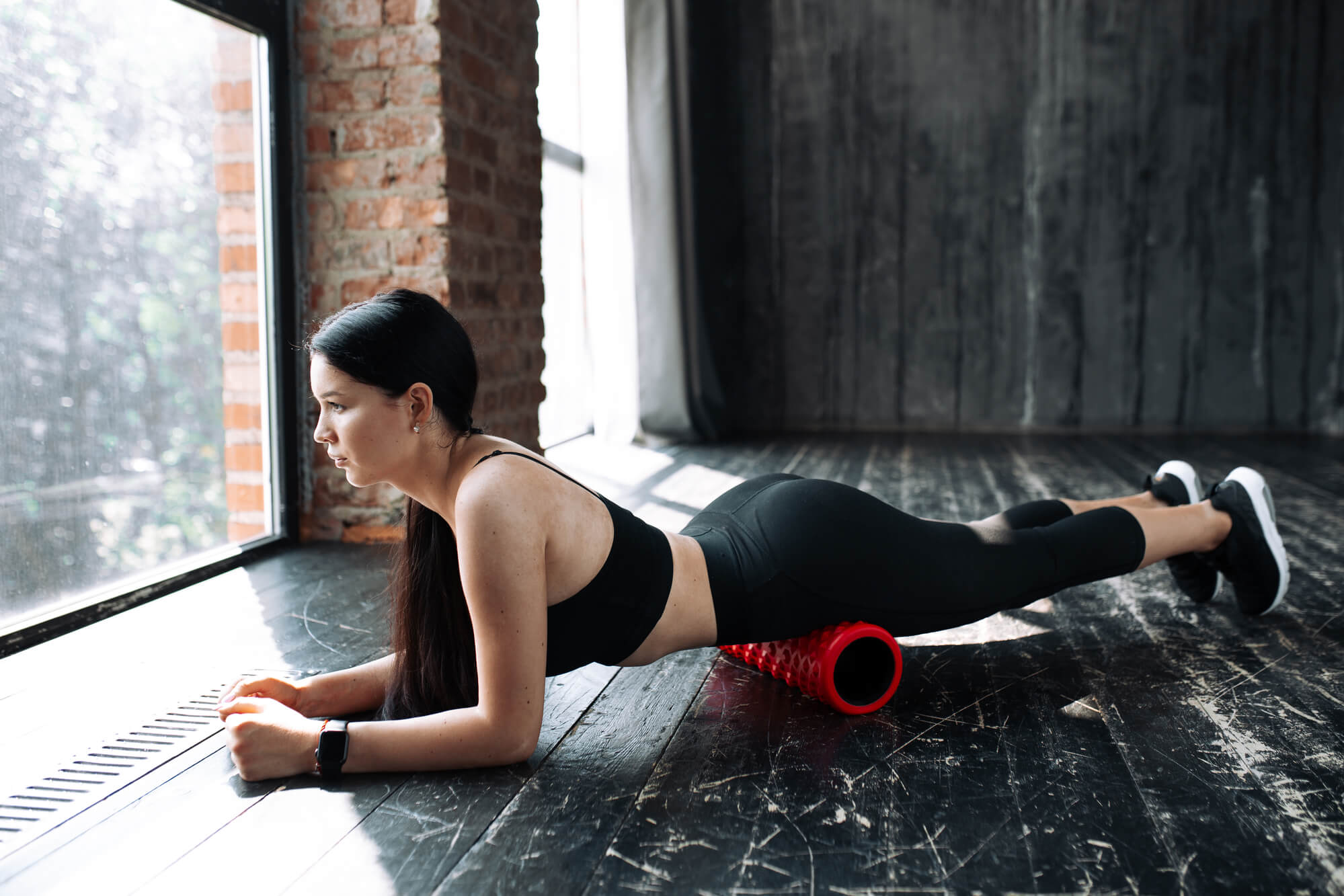
- Foam rolling has been used to loosen tight muscles, speed recovery after workouts, and prevent injuries. Daily foam rolling can help break up and loosen the connective tissue that protects and separates muscles to combat fatty tissue and cellulite.
Are there supplements that can help mitigate cellulite?
Caffeine extract, grapeseed extract, gingko biloba, and bioactive collagen peptide supplements help to reduce the appearance of cellulite. Caffeine extract can help to dehydrate fat cells, mitigating their appearance on the outer skin. Like ginkgo biloba, grapeseed extract can increase blood flow to many parts of the body, reducing the appearance of cellulite.
Bioactive collagen peptide supplements help to reduce cellulite and increase skin thickness. Taking supplementary collagen also helps repair collagen bands and other structures, and boosts metabolism within dermal cells. Specific collagen peptides have been found to help reduce the appearance of cellulite.
Taking collagen supplements can help rebuild your weakened skin structure, and studies show how effective collagen dietary supplementation can be for reducing the appearance of cellulite.
Are there medical treatment options for reducing cellulite?
For pronounced cellulite, treatment options are available to temporarily reduce the appearance of cellulite, with results that can last months or years. These medical cellulite treatments are considered cosmetic dermatology, so they aren’t usually covered by insurance. Specialists in dermatology and reconstructive surgery, however, can recommend the appropriate treatment.
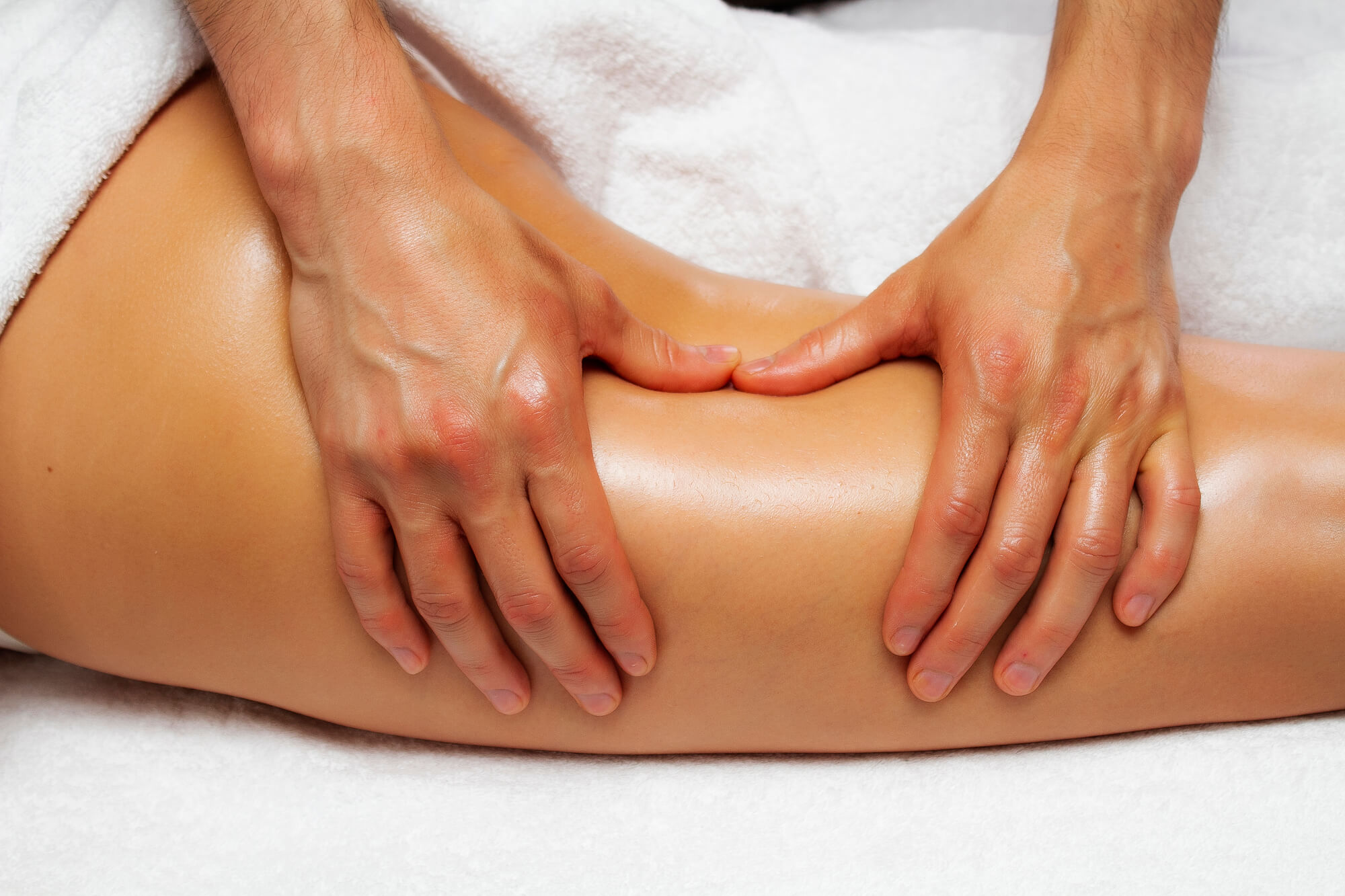
To minimize skin’s dimpled appearance, cellulite treatments include:
• Lymphatic drainage massage, which promotes circulation and reduces fluid retention
• Laser treatments, which break down fat cells, stimulate collagen production, and break up the tough bands beneath the skin that cause us to see cellulite
• Radiofrequency procedures, which use heat to tighten skin and improve circulation
• Acoustic wave therapy, which breaks down the irregular collagen fibers (fibrosis) that characterize cellulite; in acoustic wave therapy, a handheld device effectively uses sound waves to break up cellulite
• Ultrasound liposculpting, which is a non-invasive procedure that effectively targets and destroys fat
• Subcision and vacuum-assisted precise tissue release procedures, which break up the tough bands beneath the skin that cause us to see cellulite
• Endermologie, which, through lipolysis, uses mechanical rollers that deeply massage the treatment area to encourage the release of fat deposits and to stimulate elastin and collagen production in order to leave the skin tighter and smoother
• Liposuction, which uses a suction technique to remove fat from specific areas of the body, such as the abdomen, hips, thighs, buttocks, arms or neck
• Cryolipolysis, which freezes unwanted fat so the body can then eliminate it.
Research shows that some of these treatments (such as laser therapy, lymphatic drainage massage, and other types of deep tissue massage), can help patients get rid of cellulite, and its dimpled skin that looks like orange peel when certain procedures are used together, such as combining liposuction and ultrasound or laser procedures.
Liposuction alone won’t remove cellulite, but used together with ultrasound or laser treatments, it can tighten skin and reduce the appearance of cellulite. A board-certified dermatologist can advise you on the best treatment option for you.

Can Sofwave™ help to get rid of cellulite?
In December 2022, Sofwave announced the U.S. Food and Drug Administration’s (FDA’s) clearance of Sofwave™’s SUPERB™ technology to be used for short-term improvement in the appearance of cellulite.
Dr. Shimon Eckhouse, Sofwave chairman and co-founder, said, “We are pleased to receive FDA clearance to use the Company’s proprietary SUPERB technology to improve the appearance of cellulite in the short term. Non-invasive treatment of cellulite is one of the most desired body treatments in medical aesthetics because of the high prevalence of cellulite in women of all ages and the lack of effective and safe solutions with no patient downtime.”
Grand View Research says that the global cellulite treatment market in 2021 was valued at more than $1 billion, and it is expected to grow at a compound annual growth rate of 11% through 2030.
Since 2021, Sofwave™ has also been FDA-cleared for reducing facial lines and wrinkles, lifting the eyebrow, and lifting lax skin of the submental and neck tissues.
What did Sofwave™ clinical trials show for improving cellulite?
In support of the cellulite FDA clearance, Sofwave™ conducted a multi-site clinical study that evaluated the safety and effectiveness of the device for the non-invasive dermatological aesthetic improvement in cellulite appearance. Sixty-eight women were treated in the U.S. Eligible patients received two treatments (two to four weeks apart) using SUPERB technology on one side (right or left) of the lateral/posterior upper thigh or buttocks.

Serial clinical photographs were assessed by blinded independent reviewers to identify pre-treatment images when compared to post-treatment images and to grade the pre-treatment and post-treatment images using the Cellulite Severity Scale. Improvement was also evaluated using the Global Aesthetic Improvement Scale and the Laxity Scale. Post-study, the blinded reviewers correctly identified the post-treatment images for 89% of the subjects.
How does Sofwave™ work?
Sofwave™’s ultrasound energy passes through the skin’s surface, heating the mid-dermal tissue at the precise depth and temperature to rejuvenate collagen fibers, which lifts the skin. During the treatment, the Sofcool™ cooling mechanism protects the skin from burning – ensuring safety.
What is the Sofwave treatment like?
Non-surgical Sofwave™ procedures require no needles or incisions, and the discomfort level with Sofwave™ treatments is well tolerated. After the procedure, you can go right back to your activities. Sofwave™ procedures take only about 45 minutes to complete. How convenient is that?
Is Sofwave™ appropriate for all skin types?
Yes, Sofwave™ is safe for all skin types. Ultrasound absorption is independent of skin color or pigmentation for minimizing the appearance of cellulite.
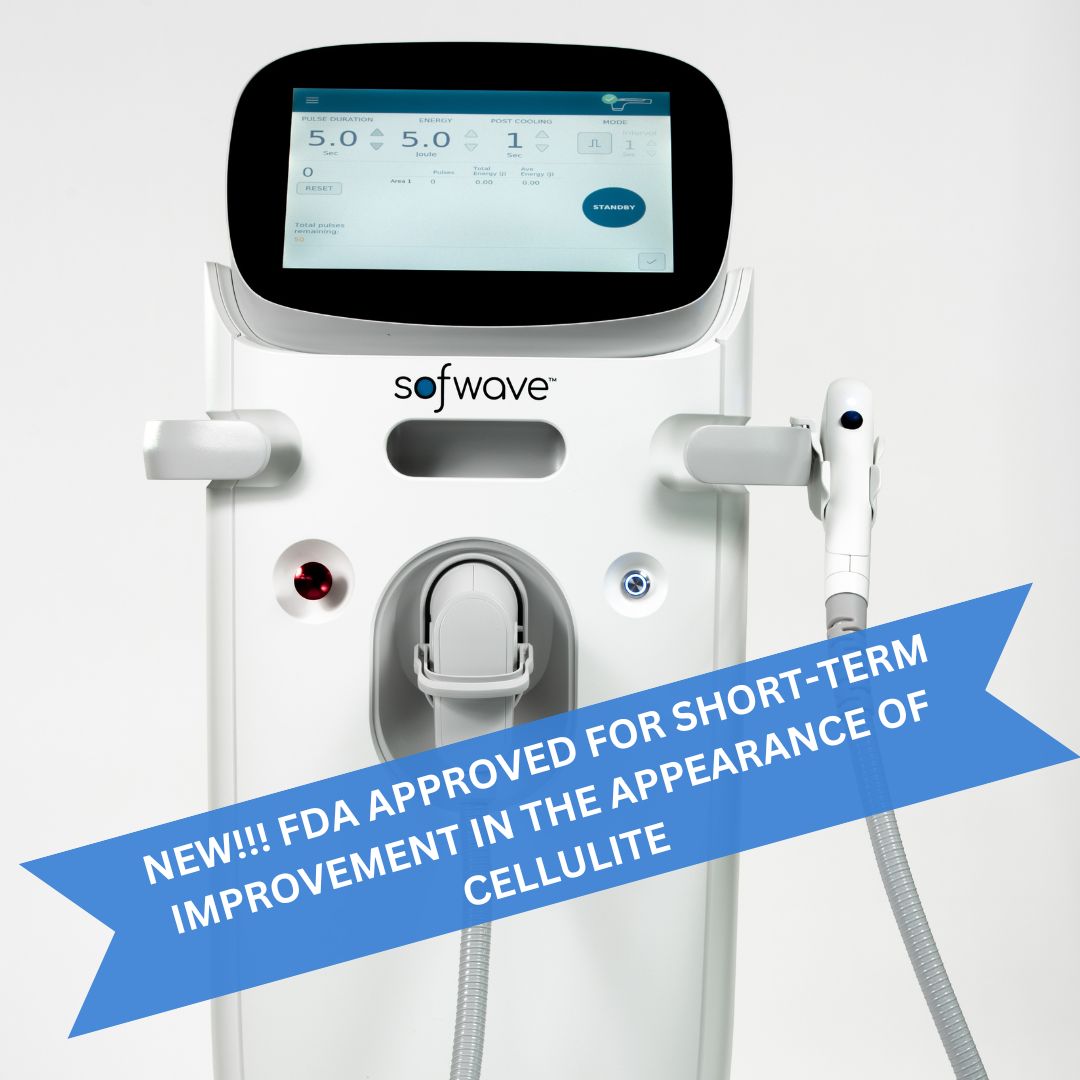
What recognition has Sofwave™ received?
Since Sofwave™ technology made its debut in 2020, it has received numerous awards.
- In 2022, Cosmopolitan magazine’s Holy Grail Beauty Awards honored Sofwave as “Best Game Changer” in its Winning Product category.
- NewBeauty magazine also recognized Sofwave as “Best Latest in Ultrasound” in its April 2022 Beauty Awards.
- SHAPE magazine’s 2022 Skin Awards named Sofwave a “winner to help achieve your healthiest complexion“
- ELLE magazine’s “2021 Future of Beauty Awards” named Sofwave as one of the best in its In-Office Skin Treatment category.
References:
- “Cellulite,” Mayo Clinic, https://www.mayoclinic.org/diseases-conditions/cellulite/diagnosis-treatment/drc-20354949
- “Can Cellulite Go Away On Its Own?,” Dr. Arash Akhavan, The Dermatology & Laser Group, https://dermatologyandlasergroup.com/can-cellulite-go-away-on-its-own/
- “Cellulite,” Beth Axtell, WebMD, https://www.webmd.com/beauty/get-rid-of-cellulite
- “Cellulite Treatments: What Really Works?,” American Academy of Dermatology Association, https://www.aad.org/public/cosmetic/fat-removal/cellulite-treatments-what-really-works
- “What is Cellulite and How Can You Treat It?,” Emily Cronkleton, Healthline.com, https://www.healthline.com/health/cellulite
- “Tips for Reducing Thigh Cellulite at Home,” Jennifer Huizen, Medical News Today, https://www.medicalnewstoday.com/articles/326509
- “Formation of Cellulite Explained,” Theodoros Manfredi, HealthGuidance.org, https://www.healthguidance.org/entry/15989/1/formation-of-cellulite-explained.html
- “Lymphatic Drainage for Cellulite,” Editorial Staff, Cellulite Institute, https://www.celluliteinstitute.com/lymphatic-drainage-for-cellulite/
- “Ultrasound for Cellulite,” Editorial Staff, Cellulite Institute, https://www.celluliteinstitute.com/ultrasound-for-cellulite/

